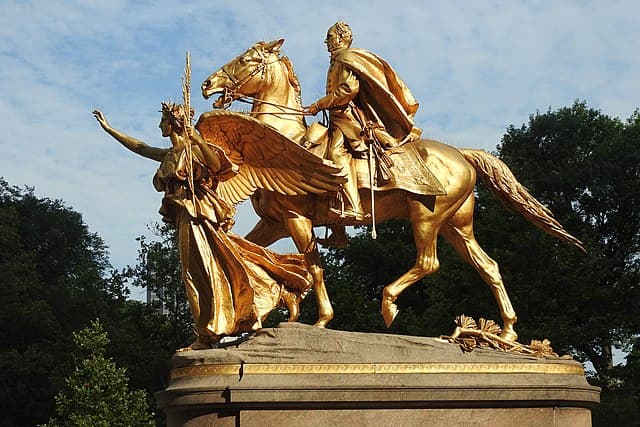The Latest Online Influencer: General William Tecumseh Sherman
A professor describes the trend as ‘a reaction against neo-confederate sentiments in the U.S., as well as against right-leaning movements, policies, and court rulings.’

Who could have guessed that in 2022 a trending TikTok dance would involve odes to William Tecumseh Sherman’s March to the Sea in 1864?
Users across social media, responding to online displays of neo-Confederate sympathies, have taken to “dunking” on the Civil War-era South with posts glorifying General Sherman and other Union heroes.
The emerging trend — dubbed “Sherman Posting” — involves text, videos, and images evoking nostalgia for the Union during the Civil War and Reconstruction.
The trend, which is particularly popular on reddit and TikTok, is intended as counter-programming to the romanticization of a Confederate general, Robert E. Lee, in some corners of the internet, and is intended to show support for the Union’s cause.
Posts range widely in terms of content, with some being outright comedic and others being slightly more serious. Some glorify the Union victory, while others prod at potential future conflict.
An example of the former features a young woman dancing over a remix of “Union Dixie,” a Civil War-era parody of the more famous Dixie anthem that begins, “Way down south in the land of the traitors, rattlesnakes and alligators.”
The first part of the video features a quote from a Confederate apologist saying, “The Confederate flag represents my history.” Then, an aggressive hip-hop beat drops in with the “Union Dixie” remix.
The young woman begins striking poses as the text “History of taking a Fat F—in L” appears on screen, with the L being a stand-in for the word “loss.” The video ends with an edit of a flaming Confederate battle flag and the young woman drinking from a bottle labeled “REBEL TEARS.”
Another Sherman post is a mock propaganda poster that reads: “You again? Stop the ‘Alt-Right’ — We Beat ‘em Before We’ll Beat ‘em Now.”
The poster features an image of Uncle Sam rolling up his sleeves while flag-bearing Nazis and Klansmen cower in the corner of the frame.
The term “Sherman Posting” takes inspiration from Sherman’s famous march to Savannah from Atlanta in 1864, during which he burned almost everything he and his troops came across. The campaign broke the morale of the Confederates, and destroyed a commercial center of the Confederacy, Atlanta.
It’s common for Sherman posts to feature images of Sherman or of President Grant, another one-time Union general. “Sherman didn’t go far enough,” is a common line featured in the posts.
Other common features of Sherman posts include young people dancing in “Union blues” to remixes of “Union Dixie” or edits of people “dunking,” as one user put it, on Confederate sympathizers on the internet.
The Sherman posts are popping up across every major social media platform, including Facebook, Twitter, and Instagram. Most of the posts are concentrated on reddit and TikTok. A Sherman posting subreddit on reddit has nearly 70,000 members.
On TikTok, most posts are tagged as “Sherman’s March.” Videos with the tag have been viewed more than 120 million times on the platform.
The editor of the Journal of Psychosocial Studies, Matthew Bowker, a professor at University of Buffalo, described the trend as “a reaction against neo-confederate sentiments in the U.S., as well as against right-leaning movements, policies, and court rulings.”
While, as noted above, many Sherman Posts are informational or intended for humor, Mr. Bowker noted that some include more aggressive messaging.
“Sherman, as these posters know, was a particularly brutal and violent person,” he said. “‘Sherman posting’ seems to be more about violence and conflict than either ‘unity’ or ‘the Union.’”
He said that the trend appears to be a response to neo-Confederate groups and sympathies, which have become increasingly visible in the age of social media.
In Mr. Bowker’s analysis, the trend falls into a psychological mechanism colloquially called “splitting,” which he describes as “a kind of over-simplified good/bad division.”
He also said splitting is “a defense-mechanism we probably all employ but one that is aggravated by undue stress and anxiety.”
Mr. Bowker argues that the posts are an “outward expression of inner rage,” and pointed to the group dynamic as providing a sense of “‘unity’ and a common banner.”
In his view, it provides an outlet for frustration even if it is “about something only partly related to or even entirely different from the causes celebrated by ‘Sherman-posters.’”

